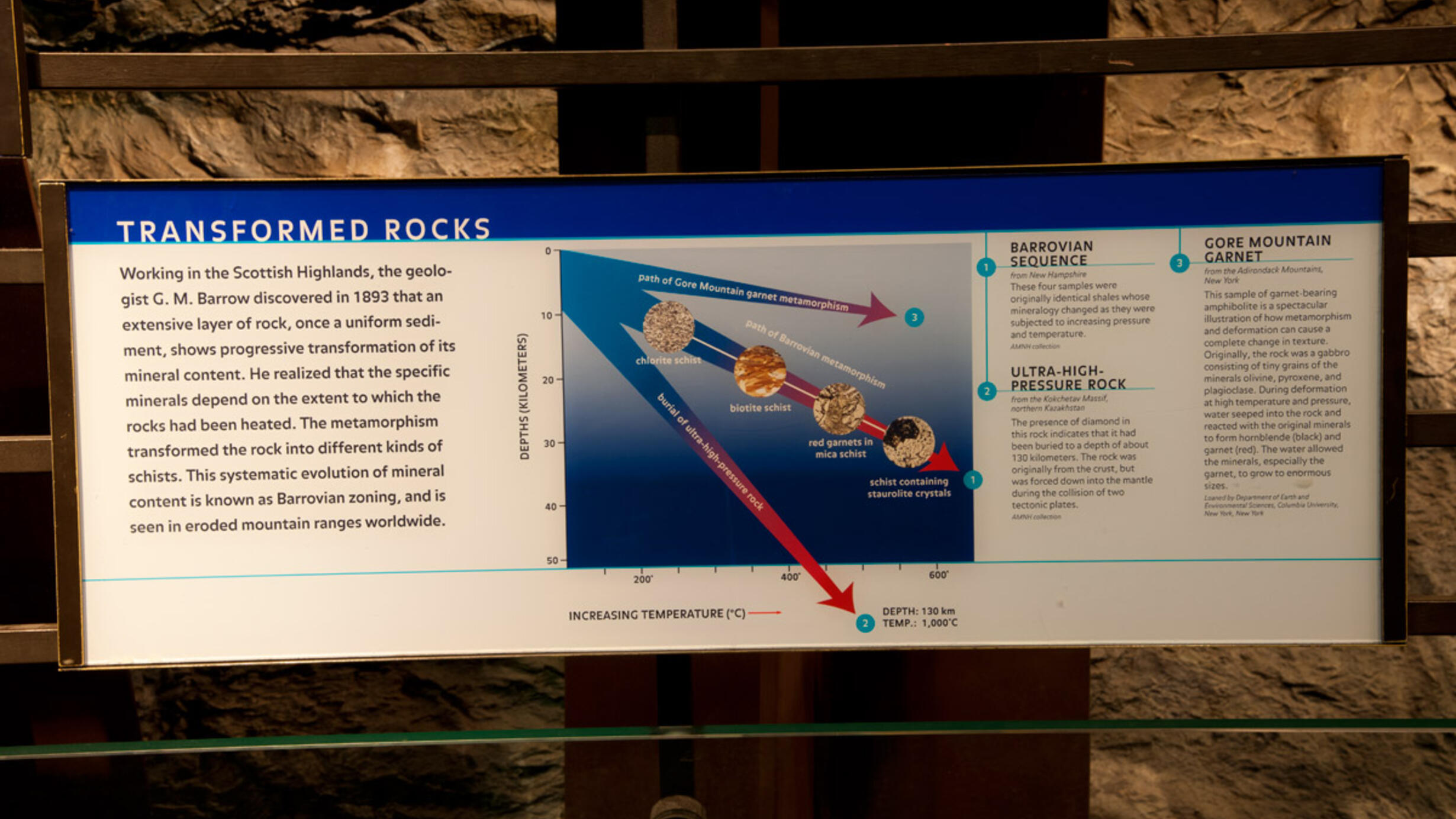Transformed rocks
Part of Hall of Planet Earth.
Part of Hall of Planet Earth.
 AMNH/R.Mickens
AMNH/R.Mickens Working in the Scottish Highlands, the geologist G. M. Barrow discovered in 1893 that an extensive layer of rock, once a uniform sediment, shows progressive transformation of its mineral content. He realized that the specific minerals depend on the extent to which the rocks had been heated. The metamorphism transformed the rock into different kinds of schists. This systematic evolution of mineral content is known as Barrovian zoning, and is seen in eroded mountain ranges worldwide.